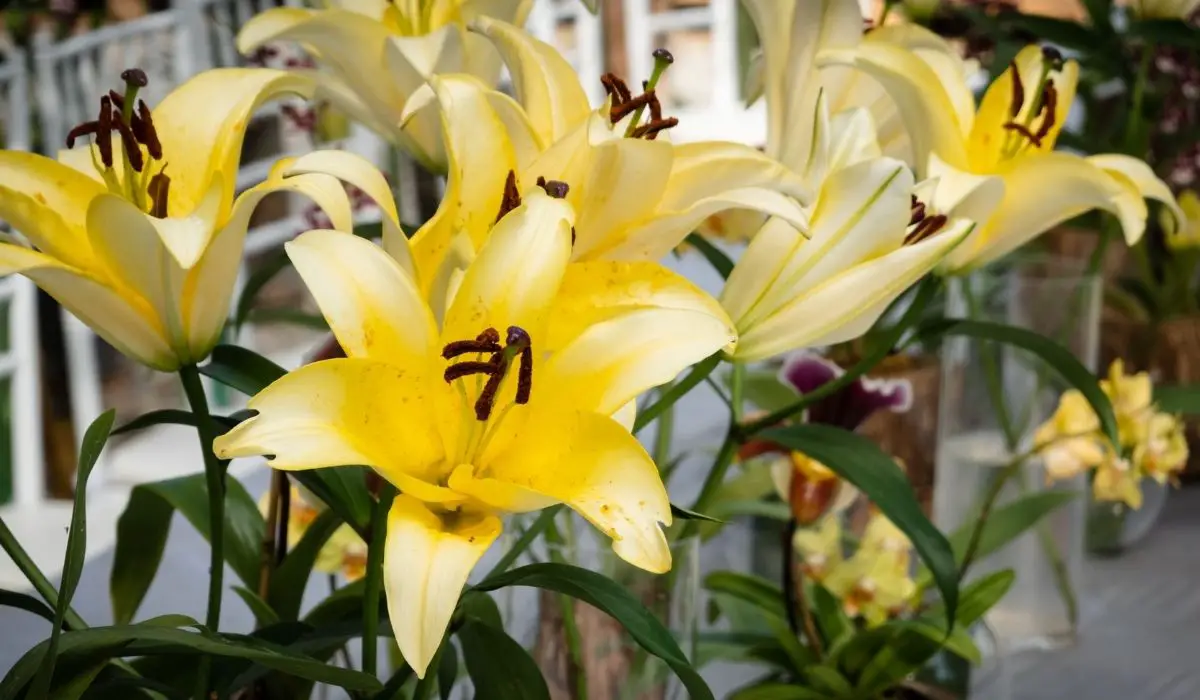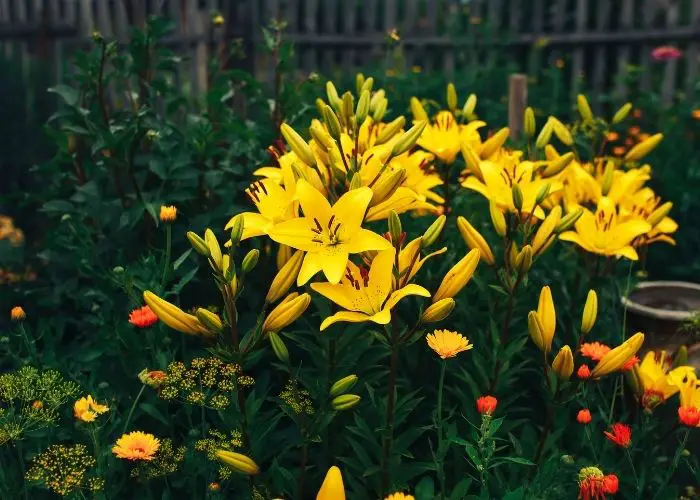Last Updated on November 26, 2021 by
Lilies are an immensely popular addition to any gardener’s exhibit, but many enthusiasts wonder what to do with lilies after they bloom. These exotic-looking flowers aren’t difficult to take care of at all! Taking care of them before they bloom and after the blooming period has passed is only a matter of practice.
What To Do When Lilies Have Finished Flowering?
Once the blooming period has passed for your lilies, the best thing you can do is to remove the flowers! You’ll notice that the flowers are starting to fade, indicating that the blooming period has ended. If you don’t remove the flowers, they will produce seeds. That’s fine if you want to plant more lilies, but it’s best to plant them in a different spot!
Seeding, the process of creating seed, will make the plant concentrate energy on the seeding process instead of plant growth! This is why it’s best to cut the flowers off after the blooming period.
Some gardeners also cut the flowers when the blooms first open. This technique is useful if you’re looking to use them in floral arrangements!
Many enthusiasts wonder how to prune lilies after blooming, but it’s best to outright cut the flowers off.
It’s also possible to remove the stem itself only. Gardeners do point out that you shouldn’t remove the leaves until they have completely died down, you’ll know this when they turn brown. If you cut the leaves before the end of their season you’ll end an important natural process! Leaves help with the nourishment of the bulb – this ensures that your lilies are prepared for the next season’s blooming process.
Taking Care Of Lilies
Wondering how to care for lilies after they bloom? Lilies are not difficult to care for at all! There are typically four most popular lily species: Asiatic lilies, Easter lilies, Trumpet lilies and Oriental lilies. Most lilies start blooming in early summer and the blooming period ends in the fall, with minor variations in those time periods, depending on the exact species! Many gardeners plant different species of flowers in the same spot in their garden. That way, they have a colorful scheme for the largest part of the year, because different lilies bloom at different times!
Planting Lilies
Most experts suggest that you plant your lilies in the fall, at least a month before your first frost. By the time spring arrives, your lilies will have established roots in the ground, while the winter will help them bloom big!
However, if you live in an area with particularly cold and harsh winters, you should plant your lilies in the spring. They most likely won’t make it through the winter if they’re too young.
It’s also best to buy your lilies just before you plant them – don’t buy them and make them wait for a week or two before you decide to plant them. They will lose quality and deteriorate over time.
When you’re actually planting your lilies, make sure to choose soil that drains well. It’s also best to choose a section that isn’t shaded! Lilies love the sun and need at least six hours of sun each day! Using rotten leaves and other organic matter that’s rotten away will propagate growth very well!
Caring For Lilies
Lilies aren’t difficult to care for at all, there are only a few things you need to keep in mind.
Regarding the sun, we already explained that lilies love the sun and need at least six hours of sun each day. You shouldn’t worry about watering, because lilies require a moderate amount of water – feel free to water whenever you want to!
Regarding fertilization and compost, it’s different for a long-term and a short-term basis. You should apply a liquid fertilizer that’s high in potassium every 2 weeks from the day you plant it, up until 6 weeks after the first flowering. In the long term, gardeners suggest that you apply a thin layer of compost every spring. All tall lilies should be staked!
When you’re preparing your lilies for the winter, it’s important to add about 6 inches of mulch to them. This will help delay the freezing of the ground, which means that the roots will be able to keep growing despite the cold. Remove the mulch in the summer gradually.
It’s also best to divide your lilies every three years once spring marks the beginning of new growth!
Diseases
Lilies are prone to all your regular diseases, so it’s best to keep a few things in mind.
Snails, for example, are common, just like slugs. Animals, in fact, are your biggest concern, especially if your lilies aren’t kept in an enclosed area! Many animals, like deer, rabbits, groundhogs, etc. will eat your lilies, sometimes eating the whole plant! Using cages can be of great service!
It’s also not uncommon for lilies to develop gray mold. This is more likely to occur if you live in an area where summers are particularly wet. However, you can prevent this by planting your lilies far apart enough.
Some viruses spread by insects are also possible, but it’s unlikely to happen.
It’s possible for lilies to develop root rots or the mosaic virus. You can recognize this easily, as the plants will be withered. It’s best to prune the plants and get rid of them completely. If you spot the mosaic virus, make sure to react quickly, so the virus doesn’t spread to other plants. Similarly, if you recognize root rot, there’s nothing you can do but get rid of the whole plant before it spreads to other plants!
Conclusion
In conclusion, lilies are not difficult to plant and maintain! Once the blooming period passes, it’s best to cut the flowers off. If you don’t, the plant will concentrate on seeding instead of concentrating on growth. Aside from that, lilies are plants that need a moderate amount of water and a lot of suns. It’s best to plant them in autumn unless you have to go through a particularly harsh winter. These plants are more or less resistant to diseases, and grown lilies can also go through winter mostly unscathed. It’s best to fertilize them on a regular basis, while long-term caring isn’t too complicated.
Learn more about the Importance Of Fertilizer For Weeping Cherry Tree?




